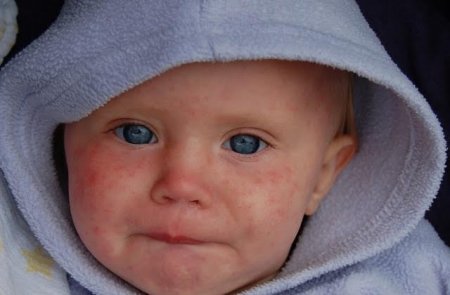P
PressRoom
Guest
What is Measles?
Measles is an endemic disease; meaning it is continually present in a community and many people develop resistance. If measles enters an area where the people have never been exposed the result can be devastating.
What causes measles?
Measles is caused by infection with the rubeola virus, a paramyxovirus of the genus Morbillivirus. The virus lives in the mucus of the nose and throat of an infected child or adult. The infected person is contagious for four days before the rash appears, and continues so for about four to five days afterwards.
You can become infected through:
Once you are infected with the virus, the virus multiples in the back of your throat and in your lungs. It then spreads throughout your body. The following are the most common symptoms of measles:
With contributions from several health articles.
Measles is an endemic disease; meaning it is continually present in a community and many people develop resistance. If measles enters an area where the people have never been exposed the result can be devastating.
What causes measles?
Measles is caused by infection with the rubeola virus, a paramyxovirus of the genus Morbillivirus. The virus lives in the mucus of the nose and throat of an infected child or adult. The infected person is contagious for four days before the rash appears, and continues so for about four to five days afterwards.
You can become infected through:
- Physical contact with an infected person
- Being nearby infected people if they cough or sneeze.
- Touching a surface that has infected droplets of mucus (the virus remains active for two hours) and then putting your fingers into your mouth, rubbing your nose or eyes.
- Being unvaccinated: If you haven't received the vaccine for measles, you're much more likely to develop the disease.
- Travelling internationally: If you travel to developing countries, where measles is more common, you're at higher risk of catching the disease.
- Having a vitamin A deficiency: If you don't have enough vitamin A in your diet, you're more likely to contract measles and to have more-severe symptoms.
Once you are infected with the virus, the virus multiples in the back of your throat and in your lungs. It then spreads throughout your body. The following are the most common symptoms of measles:
- Coryza – a runny nose usually occur first.
- A dry hacking cough is usual.
- Conjunctivitis - swollen eyelids, inflamed eyes.
- Watery eyes.
- Photophobia - sensitivity to light.
- Sneezing.
- Fever: Children are usually quite unwell and miserable for 3-5 days. After this, the fever tends to ease and then the rash fades. The other symptoms gradually ease and go.
Most children are better within 7-10 days. An irritating cough may persist for several days after other symptoms have gone. The immune system makes antibodies during the infection. These fight off the virus and then provide lifelong immunity. It is therefore rare to have more than one bout of measles.
- Koplik's spots - very small grayish-white spots with bluish-white centers in the mouth, insides of cheeks, and throat.
- Aches generally all over the body.
- Diarrhoea and/or being sick (vomiting) is common.
- Rash - 3 to 4 days after initial symptoms a reddish-brown spotty rash appears. The rash can last for over a week. It usually starts behind the ears and spreads all over the head and neck. After a couple of days it spreads to the rest of the body, including the legs. As the little spots grow many of them will join together.
Some people mistake rashes caused by other viruses for measles. Measles is not just a mild red rash that soon goes. The measles virus causes an unpleasant and sometimes serious illness. The rash is just one part of this illness.
With contributions from several health articles.


